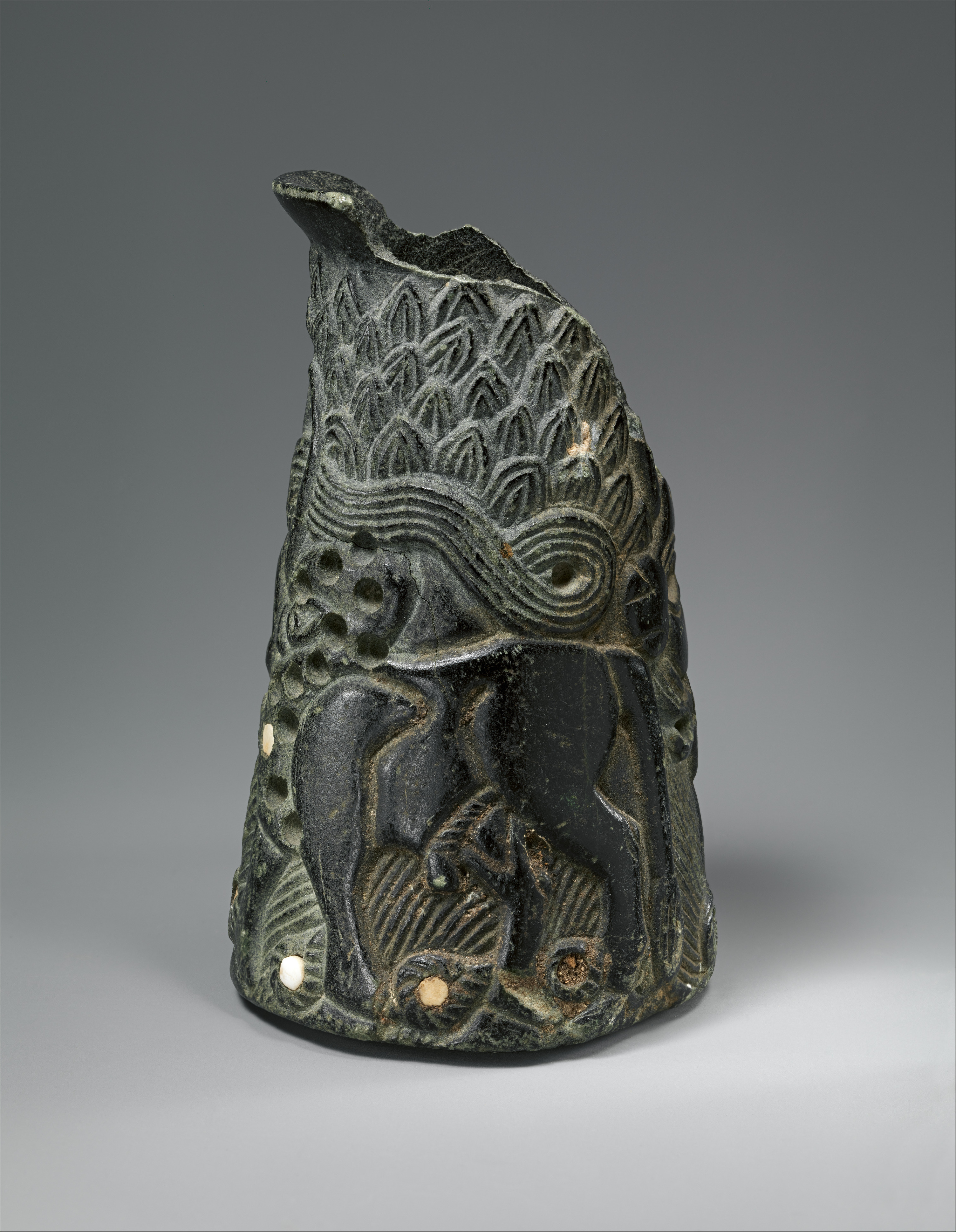Vessel with two zebu
Not on view
This vessel is of particular interest for two reasons. First, it enlarges the corpus of "Intercultural Style" chlorite vessels bearing imagery derived from the Indus Valley. Second, it is attributed to Al-Rafiah, on the east coast of the island of Tarut. Here a considerable number of fragmentary examples with elaborate figural motifs have been found, perhaps originally intended for shipment to the temple repositories of Mesopotamia.
Depicted in a carved and inlaid technique are two zebus striding one behind the other in a rich landscape. The modeled bodies of the animals are starkly outlined, emerging from a flat background in a manner characteristic of "Intercultural Style" vessels. Their eyes, muzzles, horns, and humps are sharply differentiated by deep incisions and sweeping curves. The humps are not patterned as in other examples but are embellished with circular areas of inlay, like those used on other vessels to indicate the spots on leopards' coats. Here a few white stone insets survive. Inlays were also used to accentuate the animals' curved beards and floral elements in the background.
Of great interest is the treatment of the background, which is covered with geometric patterning to suggest mountains, water, and perhaps land in a "conceptual" perspective, where depth of field corresponds to height. The mountains are depicted as a series of overlapping, nested scallops, forming a pattern similar to the imbrications that sometime cover large areas of vessels of this type. Below are horizontal streams of wavy lines ending in a spiral hook, which seem to emerge behind the animals' heads from curving parallel lines that probably indicate a river. The flowers between the legs of the animals are perhaps meant to indicate the riverbank along which they walk.
This image cannot be enlarged, viewed at full screen, or downloaded.
This artwork is meant to be viewed from right to left. Scroll left to view more.






